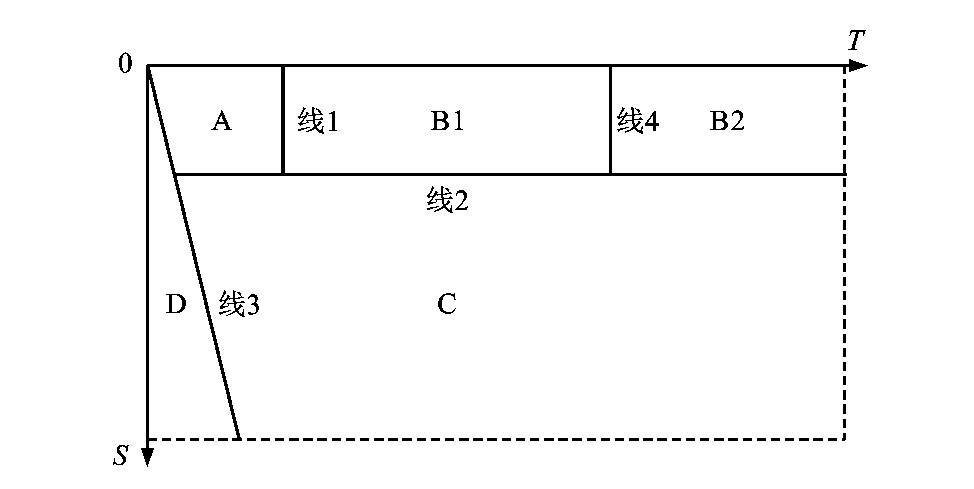Commute activity identification based on spatial and temporal information of transit chaining breaks
-
摘要: 分析了公交智能卡数据挖掘中转乘行为、通勤出行、非通勤出行识别的改进方法, 将关注点从公交换乘过程信息转移到换乘链间隔期的持续时长和空间位移信息, 以换乘链断裂时长和位移2个维度计算公交换乘链断裂点概率, 制作工作日和非工作日断裂点时空变量联合概率分布矩阵, 对比了这2种分布的差异;检验了断裂时长序列和断裂位移序列的稳定性, 标识了2条曲线的突变点和拐点, 用于推断转乘引起的转移距离和转乘时长的阈值参数;对工作日和非工作日差值时长序列曲线进行移动平均滤波处理, 使得曲线的突变与极值之间的关联能够解释转乘、通勤出行和非通勤出行3种行为与通勤和非通勤出行之间的关联;采用北京市整个一周的地面公交和地铁系统样本数据对方法进行验证, 并根据时间序列和位移序列曲线确定样本数据中常见公交换乘行为的阈值参数。分析结果表明:断裂点时空信息对样本数据中的换乘行为能提供更合理的识别分类参数;持卡人在站点间转移的容忍距离约为1.6km;断裂点转乘时长与非通勤出行的断裂时长临界点为22~48min;非通勤出行和通勤出行的时长临界点约为478min, 非通勤出行断裂点最大概率时长为140min;通勤出行的断裂时长接近期望值为601且标准差为44的正态分布;基于新方法得出的参数改善了公交出行活动的识别率, 转乘行为、通勤出行与非通勤出行的识别率分别提高了16.1%、4.2%、6.2%。可见, 换乘链断裂点的时间信息和空间信息不但可作为公交换乘行为识别的依据, 还可能带来更好的识别效果。Abstract: An approach to improve the recognition of transfers, working commutes, and nonworking commutes in smartcard data mining was introduced.The study focus was shifted from the information of transit processes to the durations and displacements between the transit chaining breaks.The probabilities of transit chaining breaks were calculated by two dimensions of the break durations and displacements, and a joint probability distribution matrix of spatial andtemporal variables for workdays and non-working days was made.The differences between the two types of distribution were compared.The stabilities of the break duration sequences and break displacement sequences were examined.The mutation points and turning points of the two curves were marked to infer the important threshold parameters for the transferring durations and displacements generated by the transfers.A moving average filter was utilized to smooth both workdays and non-working days curves of margin duration values.The relationship between the mutation and extremes of the curve was explained for the three types of commute activities relating to the transfers, working commutes, and non-working commutes.The approach was verified by a weeklong sample dataset of the Beijing bus and subway system.The threshold parameters of the common commute activities in the dataset were determined according to the time series and the displacement sequence curve.Analysis result shows that the spatial and temporal information at the breaks can provide more reasonable identification parameters for the commute activities.A tolerance distance of approximately 1.6 km between the transit connections is found among the cardholders.The threshold of transit break duration between the transferring and non-working commutes is 22-48 min.The threshold of working and non-working commutes is approximately 478 min, and the maximum probability of non-working duration is 140 min.The transit chaining break durations of working commutes fall into a normal distribution with an expected value of 601 and a standard deviation of 44.The parameters generated by the new approach lead to an improvement in commute activity recognition, the recognition rates of the transfers, working commutes and non-working commutes increse by 16.1%, 4.2%and 6.2%, respectively.So the spatial and temporal information of transit chaining breaks can not only provide the basis for the commute activity identification, but also achieve better recognition results.
-
表 1 换乘链断裂点时空信息分类
Table 1. Classification of TCB spatial and temporal information

表 2 识别率
Table 2. Recognition rate

-
[1] KUSAKABE T, IRYO T, ASAKURA Y. Estimation method for railway passengers'train choice behavior with smart card transaction data[J]. Transportation, 2010, 37 (5): 731-749. doi: 10.1007/s11116-010-9290-0 [2] BAGCHI M, WHITE P R. What role for smart-card data from bus systems?[J]. Municipal Engineer, 2004, 157 (1): 39-46. doi: 10.1680/muen.2004.157.1.39 [3] DEVILLAINE F, MUNIZAGA M, TRÉPANIER M. Detection of activities of public transport users by analyzing smart card data[J]. Transportation Research Record, 2012 (2276): 48-55. [4] 龙瀛, 孙立君, 陶遂. 基于公共交通智能卡数据的城市研究综述[J]. 城市规划学刊, 2015 (3): 70-77. https://www.cnki.com.cn/Article/CJFDTOTAL-CXGH201503010.htmLONG Ying, SUN Li-jun, TAO Sui. A review of urban studies based on transit smart card data[J]. Urban Planning Forum, 2015 (3): 70-77. (in Chinese). https://www.cnki.com.cn/Article/CJFDTOTAL-CXGH201503010.htm [5] PELLETIER M P, TRÉPANIER M, MORENCY C. Smart card data use in public transit: a literature review[J]. Transportation Research Part C: Emerging Technologies, 2011, 19 (4): 557-568. doi: 10.1016/j.trc.2010.12.003 [6] WANG Wei, ATTANUCCI J P, WILSON N H M. Bus passenger origin-destination estimation and related analyses using automated data collection systems[J]. Journal of Public Transportation, 2011, 14 (4): 131-150. doi: 10.5038/2375-0901.14.4.7 [7] 金凤君. 基础设施与人类生存环境之关系研究[J]. 地理科学进展, 2001, 20 (3): 276-285. doi: 10.3969/j.issn.1007-6301.2001.03.011JIN Feng-jun. Infrastructure and the living environment of human being[J]. Progress in Geography, 2001, 20 (3): 276-285. (in Chinese). doi: 10.3969/j.issn.1007-6301.2001.03.011 [8] MA Xiao-lei, WU Yao-jan, WANG Yin-hai, et al. Mining smart card data for transit riders'travel patterns[J]. Transportation Research Part C: Emerging Technologies, 2013, 36: 1-12. doi: 10.1016/j.trc.2013.07.010 [9] TRÉPANIER M, TRANCHANT N, CHAPLEAU R. Individual trip destination estimation in a transit smart card automated fare collection system[J]. Journal of Intelligent Transportation Systems, 2007, 11 (1): 1-14. doi: 10.1080/15472450601122256 [10] BESSER L M, DANNENBERG A L. Walking to public transit: steps to help meet physical activity recommendations[J]. American Journal of Preventive Medicine, 2005, 29 (4): 273-280. doi: 10.1016/j.amepre.2005.06.010 [11] FU Xue-mei, JUAN Zhi-cai. Understanding public transit use behavior: integration of the theory of planned behavior and the customer satisfaction theory[J]. Transportation, 2017, 44 (5): 1021-1042. doi: 10.1007/s11116-016-9692-8 [12] NASSIR N, HICKMAN M, MA Zhen-liang. Activity detection and transfer identification for public transit fare card data[J]. Transportation, 2015, 42 (4): 683-705. doi: 10.1007/s11116-015-9601-6 [13] BAGCHI M, WHITE P R. The potential of public transport smart card data[J]. Transport Policy, 2005, 12 (5): 464-474. doi: 10.1016/j.tranpol.2005.06.008 [14] 吴祥国. 基于公交IC卡和GPS数据的居民公交出行OD矩阵推导与应用[D]. 济南: 山东大学, 2011.WU Xiang-guo. Urban public transportation trip OD matrix inference and application based on bus IC card data and GPS data[D]. Jinan: Shandong University, 2011. (in Chinese). [15] ALSGER A A, MESBAH M, FERREIRA L, et al. Use of smart card fare data to estimate public transport origindestination matrix[J]. Transportation Research Record, 2015 (2535): 88-96. [16] ALI A, KIM J, LEE S, Travel behavior analysis using smart card data[J]. KSCE Journal of Civil Engineering, 2016, 20 (4): 1532-1539. [17] FARBER S, FU Li-wei. Dynamic public transit accessibility using travel time cubes: comparing the effectsof infrastructure (dis) investments over time[J]. Computers, Environment and Urban Systems, 2017, 62: 30-40. doi: 10.1016/j.compenvurbsys.2016.10.005 [18] BACHAND-MARLEAU J, LEE B H Y, EL-GENEIDY A M. Better understanding of factors influencing likelihood of using shared bicycle systems and frequency of use[J]. Transportation Research Record, 2012 (2314): 66-71. [19] MOHANTY S, BANSAL S, BAIRWA K. Effect of integration of bicyclists and pedestrians with transit in New Delhi[J]. Transport Policy, 2017, 57: 31-40. doi: 10.1016/j.tranpol.2017.03.019 [20] AGARD B, MORENCY C, TRÉPANIER M. Mining public transport user behaviour from smart card data[J]. IFAC Proceedings Volumes, 2006, 39 (3): 399-404. [21] 龙瀛, 张宇, 崔承印. 利用公交刷卡数据分析北京职住关系和通勤出行[J]. 地理学报, 2012, 67 (10): 1339-1352. doi: 10.11821/xb201210005LONG Ying, ZHANG Yu, CUI Cheng-yin. Identifying commuting pattern of beijing using bus smart card data[J]. Acta Geographica Sinica, 2012, 67 (10): 1339-1352. (in Chinese). doi: 10.11821/xb201210005 [22] TAO Sui, ROHDE D, CORCORAN J. Examining the spatialtemporal dynamics of bus passenger travel behavior using smart card data and the flow-comap[J]. Journal of Transport Geography, 2014, 41: 21-36. doi: 10.1016/j.jtrangeo.2014.08.006 [23] CHO S, LEE W D, HWANG J H, et al. Validation of activity-based travel demand model using smart-card data in Seoul, South Korea[J]. Procedia Computer Science, 2015, 52: 707-712. doi: 10.1016/j.procs.2015.05.080 [24] GUERRA E. Mexico City's suburban land use and transit connection: the effects of the Line B Metro expansion[J]. Transport Policy, 2014, 32: 105-114. doi: 10.1016/j.tranpol.2013.12.011 [25] WANG Zi-jia, LIU Yan, CHEN Feng. Evaluation and improvement of the interchange from bus to metro using smart card data and GIS[J]. Journal of Urban Planning and Development, 2018, 144 (2): 1-8. [26] MISHRA S, WELCH T F, TORRENS P M, et al. A tool for measuring and visualizing connectivity of transit stop, route and transfer center in a multimodal transportation network[J]. Public Transport, 2015, 7 (1): 77-99. doi: 10.1007/s12469-014-0091-2 [27] 王宁, 杜豫川. 社区居民适宜步行距离阈值研究[J]. 交通运输研究, 2015, 1 (2): 20-24, 30. https://www.cnki.com.cn/Article/CJFDTOTAL-JTBH201502004.htmWANG Ning, DU Yu-chuan. Resident walking distance threshold of community[J]. Transport Research, 2015, 1 (2): 20-24, 30. (in Chinese). https://www.cnki.com.cn/Article/CJFDTOTAL-JTBH201502004.htm [28] BOHANNON R W. Comfortable and maximum walking speed of adults aged 20-79 years: reference values and determinants[J]. Age and Ageing, 1997, 26 (1): 15-19. doi: 10.1093/ageing/26.1.15 [29] ASAKURA Y, IRYO T, NAKAJIMA Y, et al. Estimation of behavioural change of railway passengers using smart card data[J]. Public Transport, 2012, 4 (1): 1-16. doi: 10.1007/s12469-011-0050-0 [30] ALSGER A, ASSEMI B, MESBAH M, et al. Validating and improving public transport origin-destination estimation algorithm using smart card fare data[J]. Transportation Research Part C: Emerging Technologies, 2016, 68: 490-506. doi: 10.1016/j.trc.2016.05.004 -





 下载:
下载:











